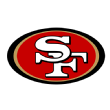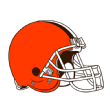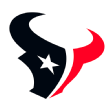Jimmy Garoppolo has taken 235 regular-season snaps and 422 more in the preseason since the New England Patriots made the former Eastern Illinois quarterback a second-round pick in 2014. Those 657 snaps weren't enough for Garoppolo to prove that he can excel over the long run as a highly paid NFL starter. However, they could be enough for QB-needy teams to prefer him over 2017 college prospects with zero experience in pro-style offenses such as the one Garoppolo ran impressively as Tom Brady's replacement this past season.
Only the Patriots know to what extent Garoppolo is available via trade. Although there is no league consensus on that front, conversations with five NFL decision-makers produced some agreement over what Garoppolo should command in a trade and which teams might be most likely to pursue a deal. With these league insiders' input, I've put together potential Garoppolo trade offers for six QB-needy teams -- the 49ers, Browns, Bears, Jets, Bills and Texans -- followed by the insiders' thoughts on which proposal would make the most sense from New England's standpoint.
Three of the five insiders thought teams interested in Garoppolo should be willing to part with a draft choice (or choices) worth a selection in the middle or late first round this year. The two other insiders placed the value higher. All agreed that desperate teams could wind up paying more, though one pushed back hard against the idea that Garoppolo's value should align with what Minnesota gave up for Sam Bradford before the 2016 season.
Of course, these are tough projections to make without knowing what New England and other teams think about Garoppolo in relation to draft-eligible quarterbacks and potential veteran free agents, but there is no shortage of opinions. I've included lower and higher potential offers for six teams based on what could make sense.

San Francisco 49ers
Lower offer: 2017 second-rounder and 2017 fifth-rounder
Higher offer: 2017 second-rounder and 2018 first-rounder
Coach Kyle Shanahan and GM John Lynch both recently signed six-year contracts. They can afford to move more methodically than some other coach/GM combinations. That is why the proposed price is lower for the 49ers than it is for some other needy teams, even though San Francisco is perceived as desperate for quarterback help.
Acquiring Garoppolo could be the 49ers' first step in loosely replicating the setup Shanahan enjoyed while coordinating the Atlanta Falcons' offense. With their version of Matt Ryan in place via Garoppolo, they could maneuver within the first round to select Clemson receiver Mike Williams, a less blazing version of Julio Jones.
San Francisco would initially offer less than the first- and fourth-round picks Minnesota gave Philadelphia for Sam Bradford. But remember: That was a 2016 trade involving 2017 picks. This initial proposal for Garoppolo would involve current-year selections worth the equivalent of a single late first-round choice.
"The Bradford trade was one of the biggest panic moves of all time, and you can say it made sense for Minnesota to do it, but I did not think that was the case, and I don't think that becomes the market," one insider said. "Philly basically got bailed out by a team that was desperate."
Desperation could again be a factor. Upgrading the 2017 fifth-rounder to a 2018 first-rounder would push the package's overall value into the range of a 2017 pick in the middle of the first round. That calculation would reflect the value chart teams typically use as a general guide when trading selections, despite protestations from academics who think the chart overvalues the highest picks, which it does, in part because teams moving up are frequently willing to pay a premium. In this example, the 2018 first-rounder would be valued more like a 2017 pick in the second round.
"Is the bottom of the first round that high of a price to pay for a guy who you really think can be a long-term starter?" one insider asked. "I don't think so. And I think that somewhere up to around No. 20, even the high teens, for a team that really loves him, I don't have a problem with that general area."

Cleveland Browns
Lower offer: 2017 second-rounder and 2017 fifth-rounder
Higher offer: 2017 first-rounder (No. 12) and a 2018 conditional fourth-rounder
The Browns are flush with draft capital, owning two picks in each of the first, second and fifth rounds. Although they have sufficient ammunition to make a market-setting push, they also have the ability to draft any quarterback they like. Cleveland's leadership is only one season into its total roster rebuild. The clock is ticking more loudly for some other teams. That means the Browns have the ability to be aggressive and, perhaps, the flexibility to be a little selective.
Under the initial offer, which one insider called wishful thinking, the Browns would keep the first and 12th overall choices without feeling any pressure to draft a quarterback in either slot. They would still own one selection in every other round but the seventh. New England, owner of the 32nd overall choice, would add the 33rd from Cleveland in this trade.
"New England doesn't love No. 1 picks," one of the insiders said. "They love seconds and thirds. If they pick 32nd and then they pick again early in the second round with a pick they acquire, they are studying all the same players."
The Patriots have made a league-high 16 second-round selections in the past 10 drafts. They have made 14 picks in the third round, more than every team but Kansas City (16). New England has drafted only eight players in the first round in that span, tied for the NFL's third-lowest total behind Washington and Seattle, who selected seven first-rounders apiece.
"I could see the Browns giving up the 12th overall pick and a future pick for Garoppolo, or making it two twos this year and a third next year," another insider said.
A different insider cursed at the thought, arguing that second-round picks are typically undervalued. This insider thought there was too much uncertainty surrounding how Garoppolo might fare outside New England for teams to place such a premium on him relative to college prospects Mitch Trubisky, Deshaun Watson and DeShone Kizer.
"I would probably be willing to give up the first pick of the second round and maybe sweeten it with a fifth or something," this insider said. "That gets it into low first-round value. The first pick of the second round is practically a first-round pick, anyway."

Chicago Bears
Lower offer: 2017 second-rounder and 2017 fifth-rounder, plus a conditional 2018 choice TBD
Higher offer: 2017 second-rounder and 2018 first-rounder, plus a conditional 2018 choice TBD
Two years ago, team president Ted Phillips said he wanted to see "constant improvement and progress" from the Bears under their newly hired general manager and head coach. The team has endured 6-10 and 3-13 seasons since then. Making a bold move to acquire a young replacement for Jay Cutler could breathe life into an organization that has watched its NFC North rivals play a combined 16 playoff games since Chicago's last postseason appearance.
That perceived desperation explains why the Bears would offer more of a premium for Garoppolo in the theoretical offers outlined above.
"I do think that is an analysis that is part of the equation, like when Houston went after Brock Osweiler last year," one of the insiders said.
The Texans signed Osweiler after their own quarterback, Brian Hoyer, tossed four interceptions during a 30-0 playoff defeat to Kansas City. Houston had been floundering at quarterback for years and decided to move aggressively for one of the few promising, young prospects to reach free agency. They wound up benching Osweiler for Tom Savage in their 14th game.
"If you look at why Houston thought Osweiler was the guy," this insider continued, "they looked at two really good fourth quarters he had against the Patriots and Bengals. Those were the highlights of his whole career with Denver.
"That is the concern with Garoppolo, especially when you bring him into a new environment with a different offense, different coaches. Let's face it: Belichick is an elite coach. Josh McDaniels is an elite offensive coordinator. Dante Scarnecchia is an elite offensive line coach. If you are going to a place where you don't have that elite stuff, you are going to see the quarterback's play drop off a lot, in my opinion."
OK, but what are the Bears' options? Cutler fatigue in Chicago makes bringing back the veteran starter a tough sell. Tyrod Taylor might or might not become available. Colin Kaepernick? Robert Griffin III? Ryan Fitzpatrick? It's an underwhelming list of potential veteran free agents, and Tony Romo, if released, presumably will seek out a contender before he shivers through a season in Chicago on the third- or fourth-best team in the division.
There is also the draft, but selecting a quarterback with zero grounding in a pro-style offense carries its own risks. The adjustment period could require more time than the Bears' decision-makers have. Kaepernick and Griffin still struggle with the adjustment after spending a combined 11 seasons in the NFL. It's not like the Bears can provide the line, running game and weapons Dallas provided for Dak Prescott in his 2016 rookie season.
Under the initial offer listed above -- 2017 second- and fifth-rounders, plus a conditional choice in 2018, if necessary -- Chicago would retain the third overall choice to use for, say, an elite defensive lineman to deploy with Eddie Goldman and Akiem Hicks. If upgrading that 2017 fifth-rounder to a 2018 first, the idea would be for Garoppolo to play well enough in Chicago for the Bears to approach 8-8, which would place that 2018 first-round selection near the middle of the order.
"I could even see Chicago giving up the No. 3 pick," one of the insiders said. "If I were them, I wouldn't want to give up more than that. At the end of the day, I don't think Garoppolo is going to get traded. I think a lot of this [is] mental exercise unless a team, like, just throws out something crazy."

New York Jets
Lower offer: 2017 second-round and 2017 fifth-rounder, plus a conditional 2018 choice TBD
Higher offer: 2017 first-rounder (No. 6), plus a conditional 2018 choice TBD
The Jets are a bit like the Bears. Both teams regressed in the standings last season, with second-year GMs and head coaches playing to increasingly cynical reviews in major markets. Those GMs and coaches could be under pressure to produce results and excitement in 2017. They will need to upgrade their quarterback outlooks to make that happen.
"Big cities, high expectations, going into your third year with a coach and GM perceived to be going backwards," one insider said. "There is your fight to see who gets Garoppolo. Who is more desperate, and who has more ammo?"
The Bears hold the third overall pick, plus one pick in every other round but the sixth. The Jets hold the sixth overall pick, plus a pick in every other round but the fourth.
"Who would give up a 1 for Garoppolo?" this insider asked. "Me thinking out loud, not Cleveland, not Chicago, not San Francisco. For some reason, I think the Jets would give a first. And then the Patriots would take the high first [sixth overall] not because they necessarily want the great player but because they could flip that pick for more picks if they wanted to."
The insiders generally thought New England would be OK trading within the AFC East, as the Patriots did when they sent Drew Bledsoe to Buffalo in 2002.
"If you really think that you have this great player in Garoppolo and the only reason you are getting rid of him is because you just can't keep him, then I think there is an argument that says you don't really want to face that guy twice a year," one insider said, "especially because Brady is only going to play maybe three more years."
The Jets, unlike the Bears, have drafted multiple quarterbacks in recent seasons. However, their decision to keep 2016 second-rounder Christian Hackenberg on the bench last season suggested that they did not think Hackenberg would be ready to start anytime soon. Changing offensive coordinators this offseason could set back Hackenberg additionally.
"You don't draft a quarterback in the second round and never give him a chance to get on the field to see what you got," one insider said. "Garoppolo was a second-rounder. Osweiler was a second-rounder. Hackenberg should have been groomed a little late in the season to at least see what they have. The fact he didn't get on the field is an alarming thing."
Perhaps not. Hackenberg, selected 51st overall, is one of 22 quarterbacks drafted with the 45th through 55th choices since the NFL went to a common draft in 1967. Of those 22 players, only Danny White, Ken Stabler and Mike Livingston started 50-plus games. All three entered the league from 1968-74. Each played under future Hall of Fame coaches on teams with stacked rosters, and there was no pressure to start right away.

Buffalo Bills
Lower offer: 2017 second-rounder and 2017 fifth-rounder, plus a conditional 2018 choice TBD
Higher offer: 2017 first-rounder (No. 10) and a conditional 2018 pick TBD
The April 2002 Bledsoe trade comes to mind as precedent for New England unloading a quarterback within the AFC East. Buffalo parted with its 2003 first-round pick in that trade, which came together as the 2002 draft was winding down. Buffalo had initially offered only a 2003 second-rounder that could upgrade to a first if Bledsoe started at least 12 games and the Bills reached the playoffs. The Bills agreed to the higher price after missing out on Patrick Ramsey in the draft.
Back then, the Bills were coming off a 3-13 season in which Alex Van Pelt and Rob Johnson combined for more interceptions than touchdown passes. The current Bills are coming off a 7-9 season that ended with the team awkwardly sitting starter Tyrod Taylor in Week 17 to avoid risking an injury that could have forced the team to guarantee him $30 million in the future.
Buffalo has until March 11 to decide whether it will exercise a 2017 option on Taylor's contract. Doing so would activate a $15.5 million roster bonus while guaranteeing another $15.25 million in base salaries, including $3.25 million in 2018. Taylor has thrown for 37 touchdowns with 12 interceptions in two seasons with the Bills. He has rushed for 1,148 yards and 10 more scores.
"I think most of us would probably stay with Taylor for another year," one of the insiders said. "You have to put a big 'if' in there for Buffalo and say this only applies if they do not exercise a right which is currently theirs."

Houston Texans
Lower offer: 2017 second-rounder
Higher offer: N/A
Any team acquiring Garoppolo would presumably want to sign him to a long-term contract as part of the deal, most insiders said. Garoppolo would surely want that. The Texans could find that difficult to accommodate, which brings to mind a long-shot possibility. They could acquire Garoppolo and wait another season before committing to a new contract. Osweiler's deal would come off the books by then. In the meantime, Garoppolo's existing deal would carry an $820,000 salary.
"Would New England ask for DeAndre Hopkins in return after they [reportedly] tried to trade Jamie Collins for him?" one insider asked as if thinking out loud. "New England would take a loss, though, because they would have to pay Hopkins."
Another insider thought the Texans, while unhappy with their initial return on the Osweiler investment, would not be sufficiently desperate to make a viable move for Garoppolo this offseason. That is why there's only a token offer listed above.
"I think they'd like to go after it, but in their minds it might be worth only a second," this insider said. "And then, would Garoppolo show up and play for $800,000? In the old days, guys had to. Now, I'm not so sure they do."
Which offer should the Patriots take?
There was no consensus on where Garoppolo would wind up if New England did trade him, but one insider made a sinister case for the Jets.
"You want a lot of positive going on in the offseason, and with the Jets, do they become even more desperate with Darrelle Revis' situation, where they might have to cut him and they need a rebound?" this insider asked. "I think they would give the sixth [overall] pick and something else. And at the end of the day, I think New England would rather trade Garoppolo in the division."
This part seems counterintuitive, unless you're versed in one view of the Patriots' psychology.
"If you are New England, you know what the quarterback is and you know he is your system guy who is good with your staff," this insider continued. "You get stronger and make your division rival weaker because they do not get the great player in the draft. They get the OK quarterback. Teams are so afraid of trading in the division. You think New England worries about the Jets making them look bad? That is comical, almost."
The Bears could be nearly as desperate as the Jets. They would provide an out-of-conference destination if the Patriots had a preference. Cleveland could be appealing for the opportunity to stockpile second-round picks, which the Patriots have valued quite a bit previously. One insider suggested that the Patriots could trade Garoppolo and then select a quarterback late in the first round or early in the second, beginning the cycle anew.
"The bottom line is, when you are talking about trading pick for pick, you can get a little sense for value because of the history we have with picks," one insider said. "But when you start putting a player in, the evaluation can be so different. It's like when Ron Wolf traded for Brett Favre. Who in their right mind felt that made sense? Well, he had faith in his evaluation of the player and how the player would be developed within the coaching structure, and those are the things that made it a good trade."
